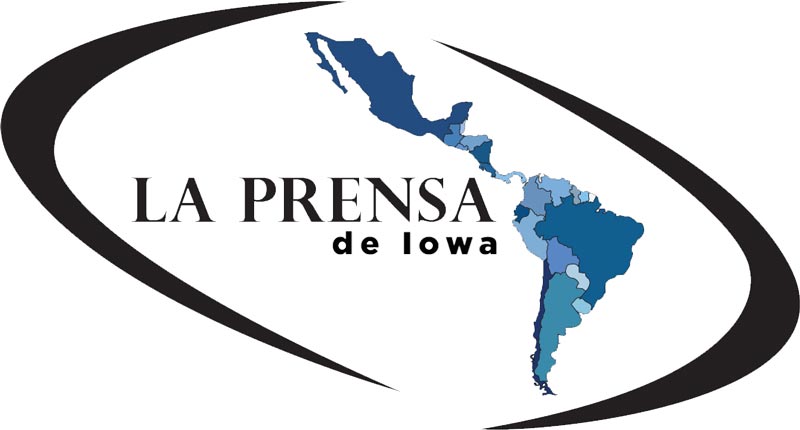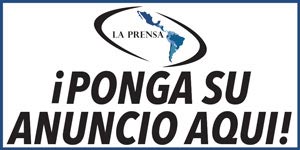Los jóvenes y su protagonismo para derrocar a la dictadura
/English translation provided at the end.
NICARAGUA
Febrero 6, 2019.- Los jóvenes son los protagonistas en estos nueve meses de protestas contra la dictadura Ortega-Murillo. Han sido en gran porcentaje los asesinados por la tiranía.
Esta es la primera de tres partes en la que mostraremos pequeños testimonios de jóvenes dentro y fuera de Nicaragua que siguen luchando, de distintas maneras, para derrocar a una violenta dictadura que acabó con familias, sueños, amores, pero que no pudo terminar con la esperanza y las ganas de que Nicaragua vuelva a la democracia.
Mel Prado, 32 años, enarbola una bandera sobre un árbol de hierro conocidos como chayopalos en referencia a la vicepresidenta de Nicaragua conocida como Chayo y quien instalo los "arboles" en la capital. (Foto tomada de redes sociales)
Primera parte
¿Qué impulsó a los jóvenes a levantarse contra la dictadura?
Los jóvenes siempre demostraron ser la punta de lanza en estos últimos decenios de la historia nicaragüense. A partir de la llegada de Ortega nuevamente al poder, gracias a un pacto aberrante con el caudillo liberal Arnoldo Alemán, los espacios de expresión comenzaron a cerrarse y allí los jóvenes volvieron a demostrar su creatividad y valentía. Distintas expresiones sociales a favor de libertades, protección al medio ambiente, transparencia en la gestión pública, elecciones libres y transparentes, fueron rápidamente reprimidas por el régimen. A la par, el Gobierno copó las instituciones del estado en un control férreo al que muchos denunciaron como dictadura pero que también muchos no creyeron. La empresa privada en una alianza oportunista, volteó la cabeza ante las denuncias y abrió las puertas a una relación que ahora le costó su credibilidad. Solo los jóvenes se mantuvieron activos y expectantes.
Un incendio en la reserva Indio Maíz y a la que el Gobierno ignoró, denunciada a través de redes sociales, fue el detonante. Una reforma inconsulta a la seguridad social terminó de encender la mecha tras años de represión y abusos. El 18 de abril inició la primavera nicaragüense con una protesta violentamente reprimida por grupos de choques de la dictadura. Al día siguiente murieron dos jóvenes y a los dos dias se contaban 20 más.
Las imágenes en TV eran muy reales: guardias armados con armas rusas AK-47 y jóvenes con piedras y huleras, enfrentados en una lucha desigual y desproporcionada.
El mundo miró nuevamente hacia Nicaragua y con el hashtag #SOSNICARAGUA desde las redes sociales, inició una revuelta pacífica que se mantiene hasta hoy.
El pueblo en su gran mayoría, jóvenes, madres, empresarios, mujeres, hasta niños, se volcaron a las calles pidiendo la salida del tirano. Los medios de comunicación independientes se dieron a la tarea de informar la represión y el régimen aumentó los desmanes.
Managua, la capital y ciudades como Masaya, León, Matagalpa, Granada, protagonizaron protestas dirigidas por jóvenes. Los asesinatos selectivos, por la precisión, tal y como lo revela un reportaje de Wilfredo Miranda de Confidencial, ganador del premio Rey de España, fueron ejecutados por francotiradores. La CIDH, Corte Interamericana para los Derechos Humanos de la OEA, lo constato a través de cienes de entrevistas, fotos y videos: tiraron a matar con armas de guerra.
Fueron los jóvenes
En las calles, en las barricadas, o botando chayopalos, los árboles que instaló la Vice Pdta Murillo, fueron jóvenes los que golpearon a la dictadura.
Mel Prado tiene 32 años y se unió a las protestas el 19 de abril. “recuerdo que estábamos viendo las noticias a eso del mediodía y me impacto ver como habían mutilado de un ojo por un impacto de bala (de goma) a un joven de la universidad agraria, su nombre es Roberto nunca lo voy a olvidar. Ese mismo día vi cómo tenían acorralados estudiantes de la Universidad de Ingeniería, y de la Universidad Centroamericana, UCA en la avenida universitaria. Me puse en contacto con unos amigos y decidimos dejar de hacer lo que estábamos haciendo para ir a apoyar a los estudiantes.
Cómo joven, ¿qué es lo que más te ha golpeado en estos 9 meses?
Lo que más me ha golpeado es todas esas vidas perdidas a manos de las hordas represoras del régimen, nadie merece morir por levantar su voz en contra de las irregularidades y abuso de autoridad de quienes gobiernan.
¿Cuál crees que debería ser el camino para sacar a Ortega y terminar con la dictadura?
Esta es una pregunta difícil, hay muchos mecanismo al final de cuentas la unión de todos hará que el régimen caiga, pero lo primordial es que la población disidente se organice para desobediencia tributaria, escolar, remesas, consumo, así como identificar negocios afines al régimen para que sientan la presión económica, el pueblo pone el pueblo quita.
¿Qué futuro ve Mel para Nicaragua? Léalo en la próxima entrega
Google Translation
February 6, 2019.- The young people are the protagonists in these nine months of protests against the Ortega-Murillo dictatorship. They have been in large percentage those killed by tyranny.
This is the first of three parts in which we will show small testimonies of young people inside and outside of Nicaragua who continue fighting, in different ways, to overthrow a violent dictatorship that ended with families, dreams, loves, but that could not end with the Hope and the desire for Nicaragua to return to democracy.
First part
What prompted young people to rise up against the dictatorship?
Young people have always proved to be the spearhead in these last decades of Nicaraguan history. From the arrival of Ortega again to power, thanks to an aberrant pact with the liberal leader Arnoldo Alemán, the spaces of expression began to close and there the young people again demonstrated their creativity and courage. Different social expressions in favor of liberties, protection of the environment, transparency in public management, free and transparent elections, were quickly repressed by the regime. At the same time, the government coped the institutions of the state in a tight control that many denounced as a dictatorship but also many did not believe. The private company in an opportunistic alliance, turned its head to the denunciations and opened the doors to a relationship that now cost its credibility. Only the young people remained active and expectant.
A fire in the Indio Maíz reserve and which the government ignored, denounced through social networks, was the trigger. A reform without social security ended up igniting the fuse after years of repression and abuse. On April 18, the Nicaraguan spring began with a protest violently repressed by groups of dictatorship clashes. The next day two young men died and two days later they counted 20 more.
The images on TV were very real: guards armed with Russian AK-47s and youngsters with rocks and stones, facing each other in an unequal and disproportionate fight.
The world looked back to Nicaragua and with the hashtag #SOSNICARAGUA from the social networks, started a peaceful revolt that continues until today.
The majority of the people, young people, mothers, businessmen, women, even children, turned to the streets asking for the tyrant's departure. The independent media were given the task of reporting the repression and the regime increased the excesses.
Managua, the capital and cities such as Masaya, León, Matagalpa, Granada, staged protests led by young people. The selective killings, for accuracy, as revealed by a report by Wilfredo Miranda de Confidencial, winner of the King of Spain award, were executed by snipers. The IACHR, the Inter-American Court for Human Rights of the OAS, noted this through hundreds of interviews, photos and videos: they shot to death with weapons of war.
It was the young
In the streets, in the barricades, or bouncing chayopalos, the trees installed by the Vice Pdta Murillo, were young people who beat the dictatorship.
Mel Prado is 32 years old and joined the protests on April 19. "I remember we were watching the news at about noon and it shocked me to see how they had mutilated an eye by a bullet (rubber) impact to a young man from the agrarian university, his name is Roberto I will never forget him. That same day I saw how they had cornered students from the University of Engineering, and from the Central American University, UCA on the university avenue. I contacted some friends and decided to stop doing what we were doing to support the students.
How young, what has hit you the most in these 9 months?
What has hit me the most is all those lives lost at the hands of the repressive hordes of the regime, nobody deserves to die for raising their voices against the irregularities and abuse of authority of those who govern.
What do you think should be the way to get Ortega out and end the dictatorship?
This is a difficult question, there are many mechanisms in the end the union of all will make the regime fall, but the main thing is that the dissident population is organized for disobedience tax, school, remittances, consumption, as well as identify business related to the regime so that they feel the economic pressure, the town puts the town away.
What future does Mel see for Nicaragua? Read it in the next installment
@JoshyCastillo
joshy.castillo@gmail.com








































